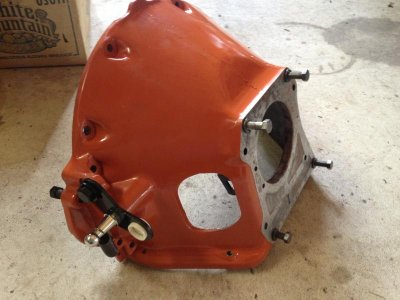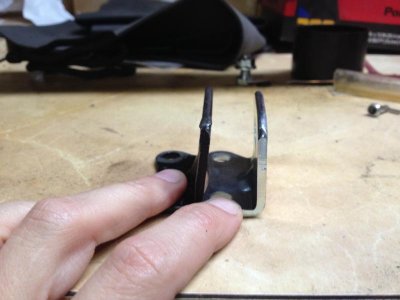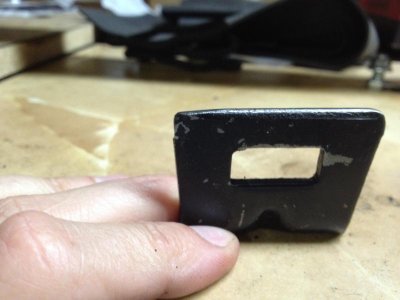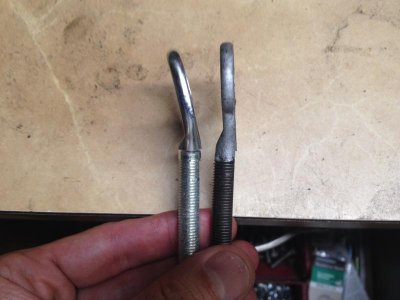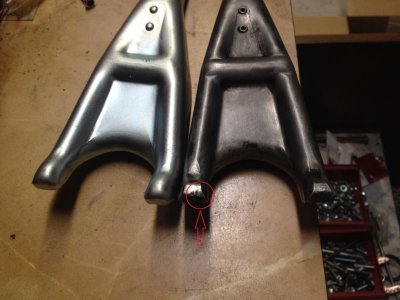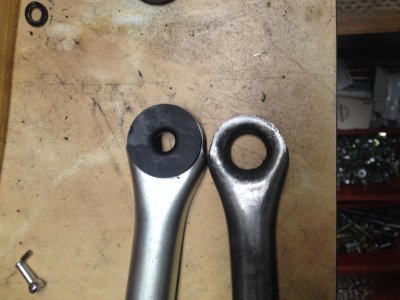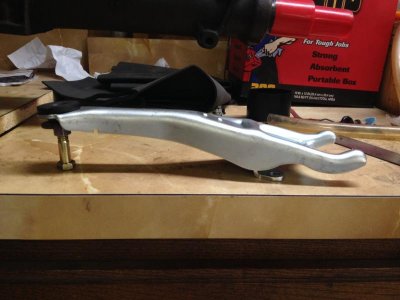So I have one (hopefully) final issue I want to address with the Road Runner before I leave for my trip on Saturday:
My clutch linkage "chatters" and is not smooth. Note that this is not the clutch itself, it engages the flywheel smoothly. The car accelerates from a stop smoothly too. It is the pedal itself, as if the entire linkage is binding and not sliding forward and back smoothly.
Details:
So it seems the issue is in the fork, bearing, or clutch. With the inspection cover off, if the clutch is depressed I swear I can feel the "chatter" coming from the fingers of pressure plate assembly. But I wasn't supposed to grease any of that, was I?
An interesting thing I just thought about was the old clutch did the same thing. That was with a different transmission, clutch and throw-out bearing, but with the same fork and pivot point.
I have limited experience setting up clutches, so I'd appreciate any help to diagnose this. Of course, I also have limited time in that Saturday morning we leave on the trip across country.
As always, many thanks for your help.
Hawk
My clutch linkage "chatters" and is not smooth. Note that this is not the clutch itself, it engages the flywheel smoothly. The car accelerates from a stop smoothly too. It is the pedal itself, as if the entire linkage is binding and not sliding forward and back smoothly.
Details:
- 1970 Plymouth Road Runner with a 383 and A-833 23 spline 4 speed (built as an overdrive, although that shouldn't matter).
- I have a new McLeod Street Pro clutch and pressure plate, with a new throw-out bearing. On installation, I greased the inside of the throw-out bearing and all the linkage parts like the pivot point and fingers. I did NOT grease the splines of the transmission, and I made sure all friction surfaces were nice and clean.
- The car has no vibrations or other issues.
- My Z bar is completely rebuilt with all new parts. If I disconnect the clutch fork, the Z bar linkage moves like butter - super easy and smooth.
So it seems the issue is in the fork, bearing, or clutch. With the inspection cover off, if the clutch is depressed I swear I can feel the "chatter" coming from the fingers of pressure plate assembly. But I wasn't supposed to grease any of that, was I?
An interesting thing I just thought about was the old clutch did the same thing. That was with a different transmission, clutch and throw-out bearing, but with the same fork and pivot point.
I have limited experience setting up clutches, so I'd appreciate any help to diagnose this. Of course, I also have limited time in that Saturday morning we leave on the trip across country.
As always, many thanks for your help.
Hawk

